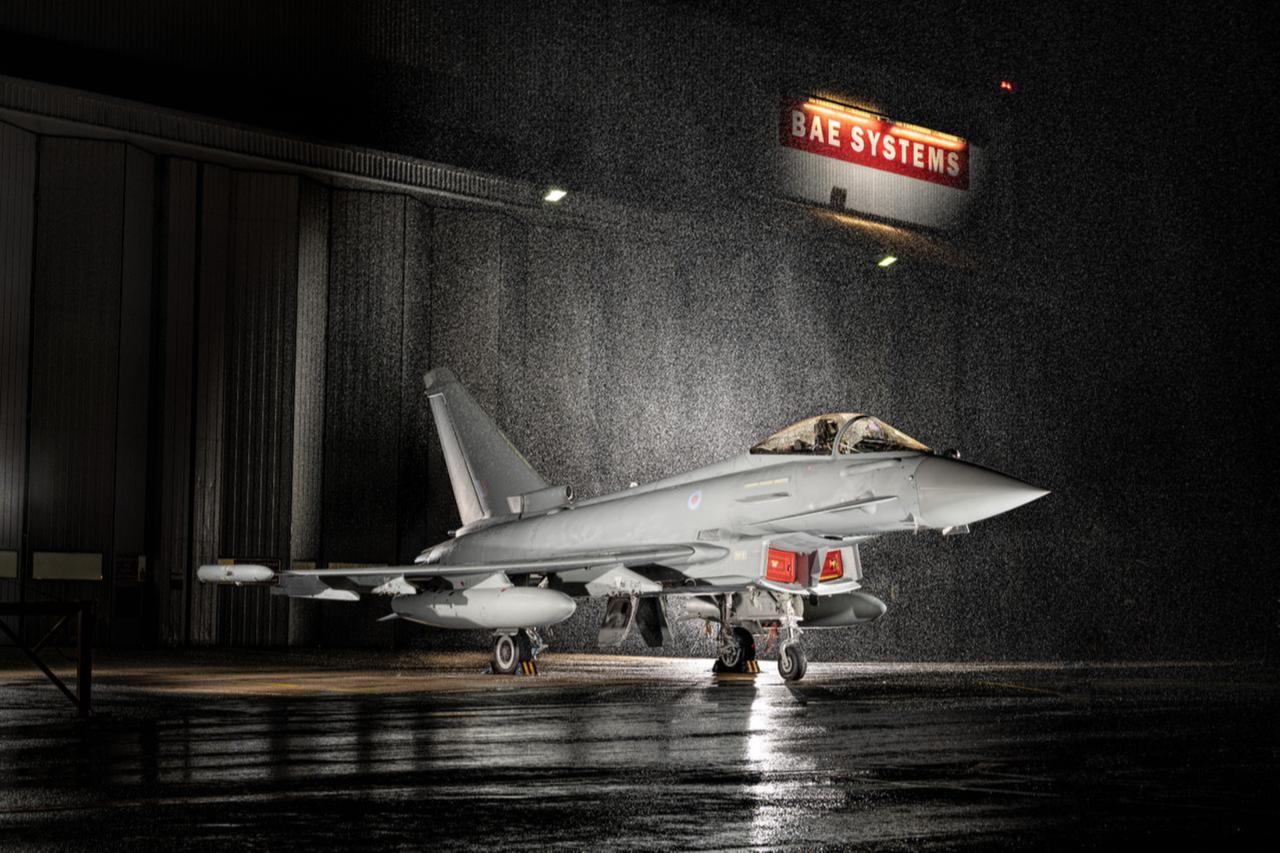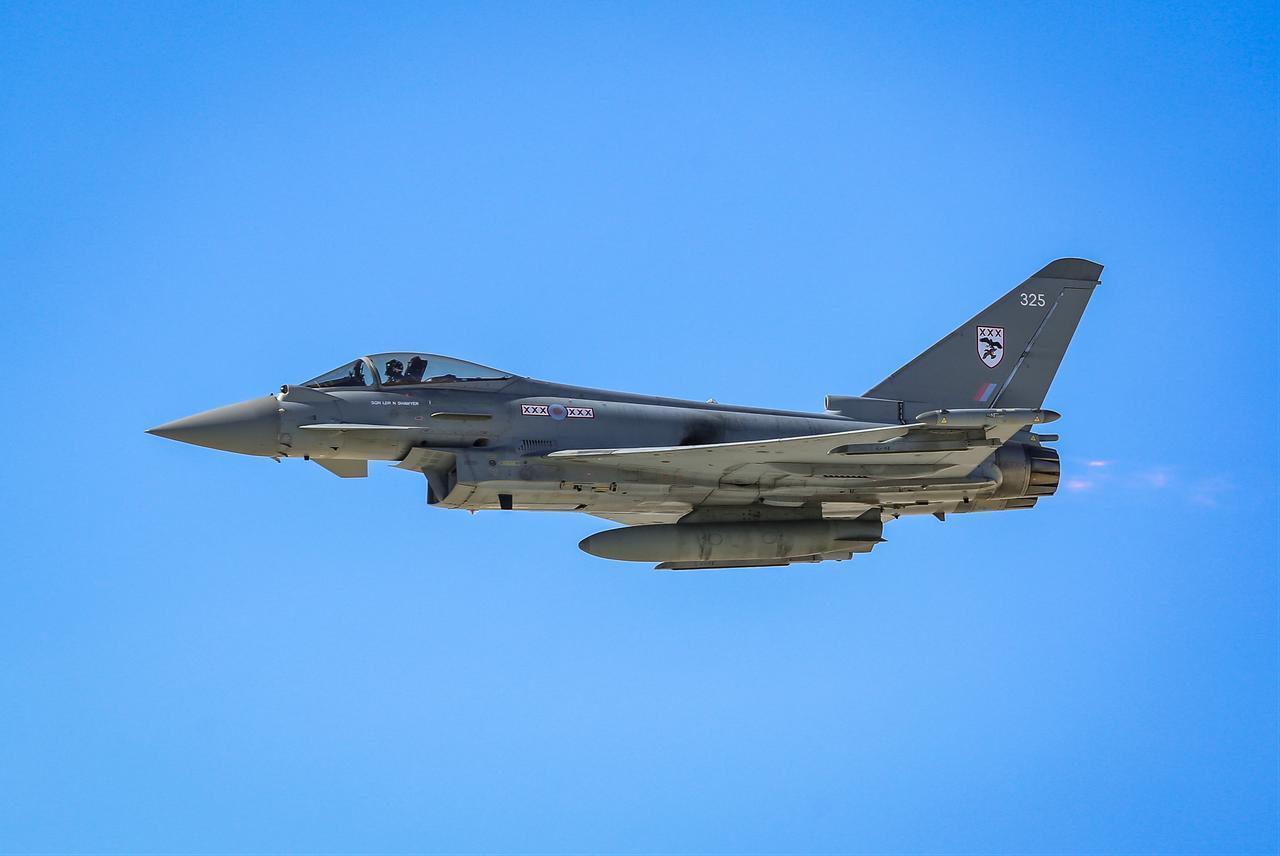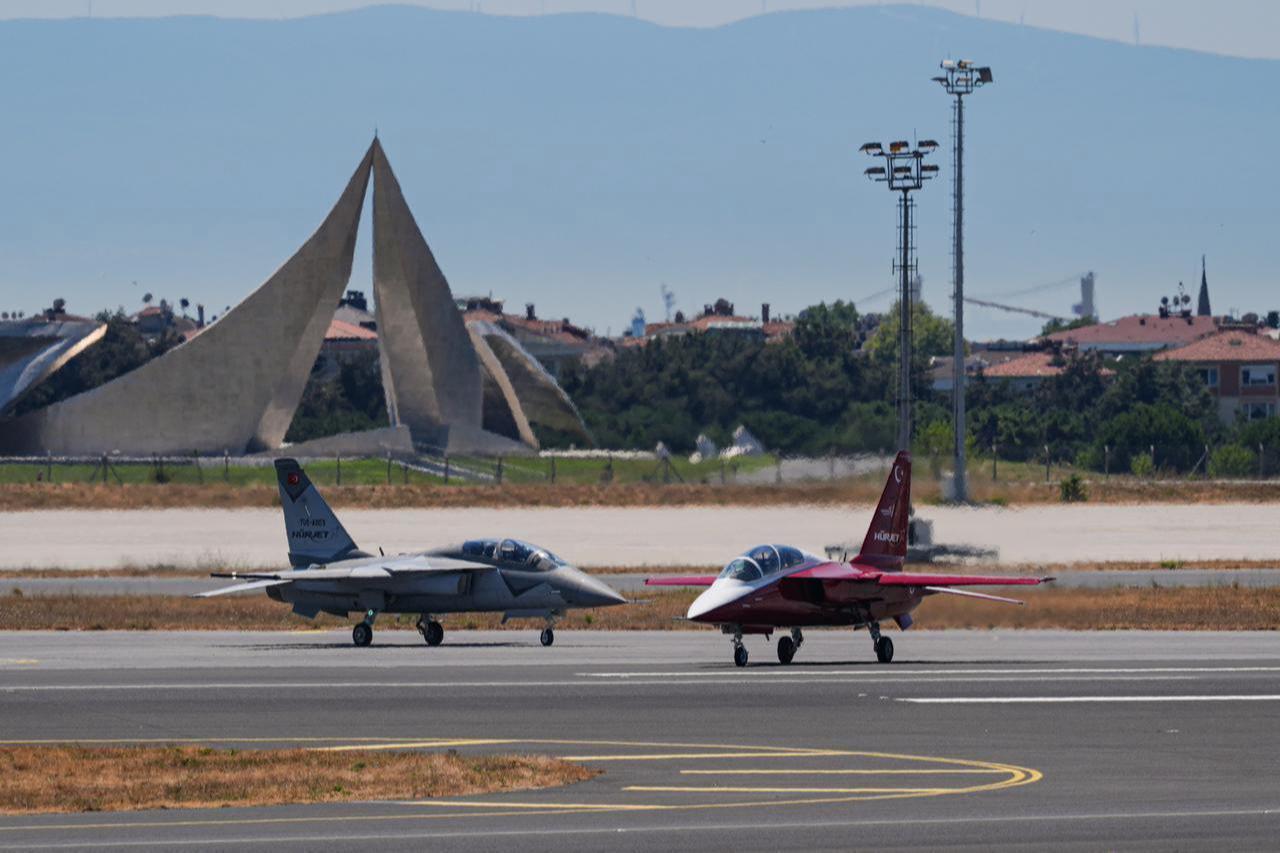
The jubilant tone in Türkiye over the acquisition of Eurofighter Typhoons is somewhat waning as critics question whether the aircraft’s apparent purchase and operating costs could make it too prohibitive for the Turkish Air Force (TuAF) to operate effectively, calling its price tag “outrageously high” and “unprecedented.”
Indeed, at a time when the Turkish economy is recovering from the shocks of pandemic-era inflation only now, allocating at least $10 billion (and possibly more) to obtain 44 Eurofighter Typhoons might appear like a poor deal.
But often-overlooked considerations, especially the pressing need to protect the Turkish homeland before indigenous systems, such as the MMU Kaan and Hurjet join TuAF in the 2030s, continuing uncertainties over defense acquisitions from the United States, and the capabilities that Turkish and European defense industries could gain by cooperating on projects after the Typhoon acquisition would make it worth the price.
The Eurofighter Typhoon is not cheap, with an estimated cost of $200 million to $300 million per unit—although almost all reported sales come with an expansive list of weapons and other add-ons (radars, spare engines, sensors, etc.).
Still, that figure is higher than most 4.5th-generation fighters, including the Dassault Rafale ($125 million), the Boeing F-15 EX ($97 million), Lockheed Martin F-16 Fighting Falcon ($), and the Boeing F-18 Super Hornet ($73 million), although the unit price of those platforms approaches that of the Typhoon when add-ons are factored in.
But the Typhoon’s rumored operating costs—varying between €20,000 to €70,000, a range that makes little sense—is also much higher compared to the platforms above.
When coupled with the need for combat pilots in NATO air forces to train for about 180-200 hours per year, and aircraft having to put in about the same hours, it is easy to see why Typhoon has detractors. The operating cost of a single Typhoon in one year (200 hours times €20,000 to €70,000) could range from €4 million to €14 million ($4.65 million to $16.22 million). That means the 44 Typhoons could cost Turkish taxpayers about €176 million to €616 million per annum ($205 million to $717 million) in the 2030s.
Turkish Vice President Cevdet Yilmaz announced in October that Türkiye’s total defense and security budget for 2026 is expected to reach TL 2.15 trillion (approximately $51.2 billion by the current exchange rate), according to TurDef website.
Why is the Typhoon so expensive? In an article posted on LinkedIn, Turkish aerospace specialist Ugur Kakasci pointed out how, during the formative years of the Eurofighter consortium, the supply chain for Typhoon’s components were divvied up not through competitive bidding or the comparative advantages of consortium member states—Germany, Italy, Spain, and the UK—but by their shares in the consortium under the principle of “juste retour” (fair rate of return).

Trying to get specific countries’ firms to produce specific parts with little regard to alternatives created an inefficient (and therefore expensive) production process.
In an interview with Türkiye Today, Kakasci added that this inefficient production scheme might have increased the Typhoon’s cost by 75%, according to a U.K. government report.
But Kakasci also clarified that the figures regarding the Typhoon’s operating costs might be overblown. “I think that €70,000 / per hour cost reflects ‘Fully Burdened / True Cost of Ownership’ figure rather than the ‘Direct Cost Per Flight Hour.’ But even at €20,000 / hour, that makes it no less expensive than the U.S. F-22 Raptor’s operating cost. In some air forces, high costs could lead to a low utilization rate of the aircraft.”
One advantage that the Typhoon offers is that its “maintenance man-hours per flight hour” (MMH/FH) is approximately 10 mmh/fh, a figure better than comparable aircraft. In addition, a crew of four technicians could reportedly change one of the Typhoon’s Eurojet EJ200 engines in as little as 45 minutes. In a major crisis, that could matter a lot.
While the above costs might make the Typhoon acquisition prohibitive, a broader perspective is in order: What will the Turkish Typhoons protect? When weighed against Türkiye’s GDP — estimated to reach $1.5 trillion in nominal terms in 2025 ($3.7 trillion in purchasing power parity), according to the IMF — and population of 85 million, $10 billion to buy the aircraft and spending several hundred million dollars (or euros) per year to defend those valuable assets hardly looks like a bad investment.

Still, why not buy the U.S.-made F-16 “Fighting Falcon” (often dubbed “Viper” by U.S. Air Force pilots)? After all, Turkish Aerospace Industries (TAI) had produced some 300 F-16s under license from the United States from 1987 to 2012 (including about 50 units for the Egyptian Air Force), and TuAF and TAI know the F-16 inside and out.
Following Türkiye’s expulsion from the F-35 program in 2020 under U.S. Congress’ Countering America’s Adversaries Through Sanctions Act (CAATSA) for its purchase of S-400 Russian air defense systems, Ankara quickly began searching for new options. In the absence of an advanced fifth-generation stealth fighter like the F-35 and TAI’s own stealth platform, national combat aircraft project, MMU Kaan, being at least 10 years away from joining the force, buying F-16s from the United States looked like the smart move.
But a Turkish defense industry official who spoke to Türkiye Today anonymously pointed out that what had triggered Turkish officials to begin the Typhoon talks with the UK in 2022 was their sense that their U.S. counterparts were attempting to overcharge them for the F-16s. “The Americans assumed that we would not want to complicate our maintenance and logistics chain by buying another aircraft, which in their minds made the F-16 our only choice,” the official said.
The acquisition of 40 new F-16s Block 70 and scores of modernization kits for aging Turkish F-16s was anything but easy. Beside U.S. pressure on Türkiye to approve Sweden’s membership in NATO, a process that nearly took two years, Ankara was not sure if additional problems with Washington might mean that it would also have its F-16s impounded the way its first six F-35s were expropriated by the United States under the CAATSA sanctions. The 40 new F-16s and about 80 modernization kits, along with radars, spare engines, and extensive munitions package would have cost Türkiye more than $23 billion.
Thus, what began as Türkiye’s apparent attempt to use the Typhoon as a stalking horse to obtain more favorable terms in its F-16 negotiations from the United States became a tangible option as uncertainties loomed over Ankara-Washington ties.
One intriguing question related to the Typhoon is whether Turkish defense industries could work their magic as they did when producing F-16 “Fighting Falcons” under license and producing more than 900 parts for the F-35 in the 2010s before Türkiye’s expulsion from the program.
The example of the F-16 and the decades-long experience that Turkish defense companies, especially Turkish Aerospace Industries (TAI), have gained in producing parts and offering maintenance, repair, overhaul (MRO) and upgrade services to TuAF, which has the largest fleet of Falcons in the world after the USAF, puts Türkiye at a unique advantage. Even the F110 GE 129 engines on the F-16s could be produced under license from General Electric at the TEI factories in Eskisehir (a subsidiary of TAI), although that also requires U.S. Congressional authorization.
Turkish defense companies are so critical for Western supply chains that their removal from the F-35 project caused Washington to sustain “nonrecurring engineering costs” of approximately half a billion U.S. dollars to move production lines to the United States, according to Defense News. Meanwhile, as leading Turkish defense journalist Goksel Yildirim reported for Anadolu Agency, the per unit cost of an F-35 increased by $10 million (approximately 5% to 10%) because of Türkiye’s expulsion from the program.
Could Turkish defense firms work a similar “magic” for the Typhoon and lower costs? Unlikely.
Since it went into mass production in 2003, more than 600 Typhoons have been delivered, but that is still small compared to the 4,600 F-16s produced since 1976, and the 1,000+ F-35s that have joined the U.S. military and allied forces since 2018.
Kakasci said, “Without manufacturing countries lowering production costs, it is hard to see how either the price tag or operating expenses could be decreased. If the Typhoon were an aircraft operated throughout the world at a similar scale as the F-16 or F-35, then we could’ve discussed MRO agreements with the Europeans.”
As mentioned by another highly reputable Turkish defense analyst, Arda Mevlutoglu, the sad aspect of this saga is that Eurofighter consortium members had offered Türkiye to join the Typhoon program as the fifth partner in the 2000s, but policy planners in Ankara did not see the point because they could obtain pretty much anything they wished from the Americans in those years.
Today, unless and until the Eurofighter consortium receives more Typhoon orders—and quite a few of those orders would have to be Turkish ones on top of the 44 units that Ankara will be receiving from Oman, Qatar, and the U.K.—it is unlikely for Türkiye’s military-industrial complex to join the Typhoon supply chain and recoup at least some of the production costs.

Turkish Typhoons’ costs, however, could be lowered in an indirect but meaningful way in the long run, namely, by giving additional time for TAI to develop MMU Kaan.
At present, TAI plans to produce the initial batch of Kaans with the General Electric F110 engines while TEI is working with other Turkish firms to develop the TF-35000 engines that will mask the Kaan’s thermal signature, like Pratt & Whitney’s F135 engines on the F-35s and F119 engines on the F-22 Raptor. That would turn the Kaan from a 4.5th-generation aircraft into a genuine fifth-generation stealth platform.
Working with the U.K.’s BAE Systems and Eurojet could potentially expedite the development of the TF-35000 provided that the Turkish and European sides could agree on intellectual property rights (IPR) and exports to third-party countries. Disagreements on those matters halted the engineering support contract between BAE Systems and TAI for the Kaan and similar cooperation between Rolls-Royce and Türkiye’s Kale Group for Kaan’s engines in the late 2010s.
Similarly, Türkiye’s Hurjet trainer jet and light-combat aircraft could lead to new avenues of cooperation between Turkish and European firms as a result of the Typhoon acquisition. Last month, Spain announced that it would purchase 45 units, the first Turkish export of a jet-engined aircraft.
While TAI develops Hurjet’s radars and avionics, Airbus Defense and some 15 Spanish companies will work to integrate their on-the-shelf components for some of the 45 units that will join Spain’s Air and Space Force. With political direction, lessons learned from that cooperation could spill over into other areas.
If Türkiye’s Eurofighter Typhoon acquisition could foster such new partnerships within NATO allies in Europe, then it would have amortized its cost.